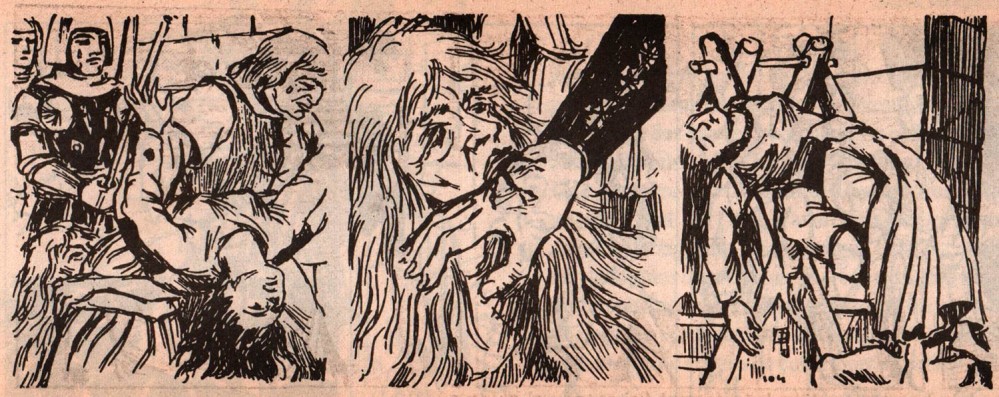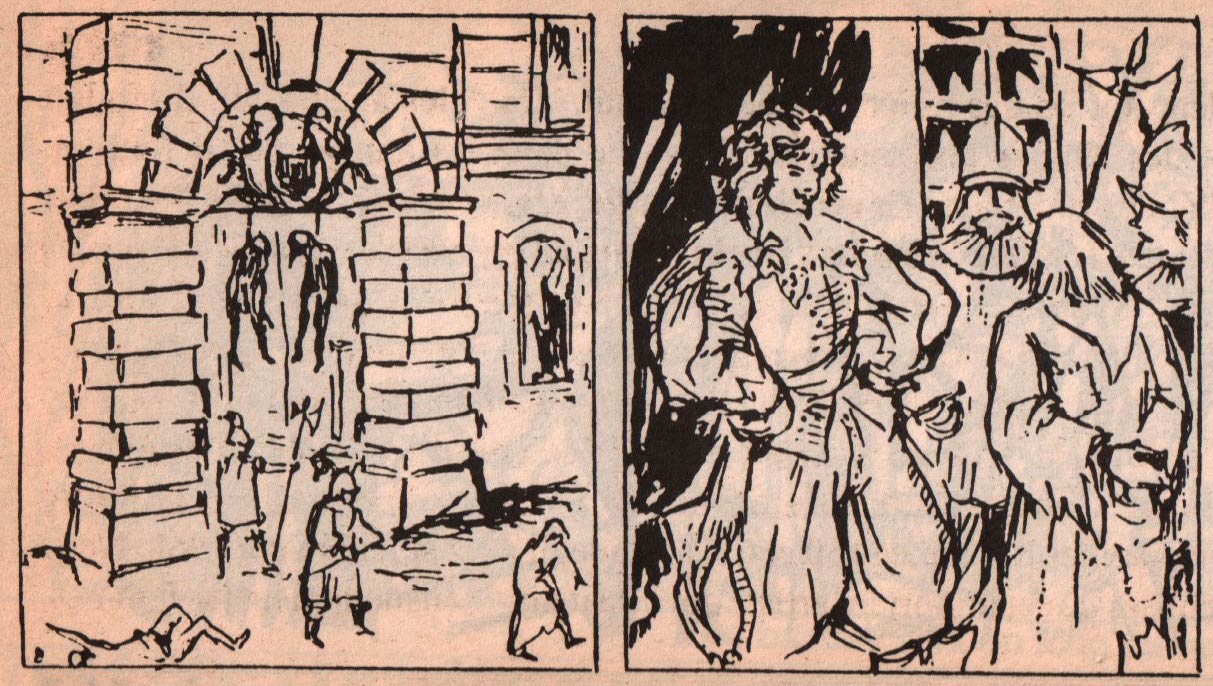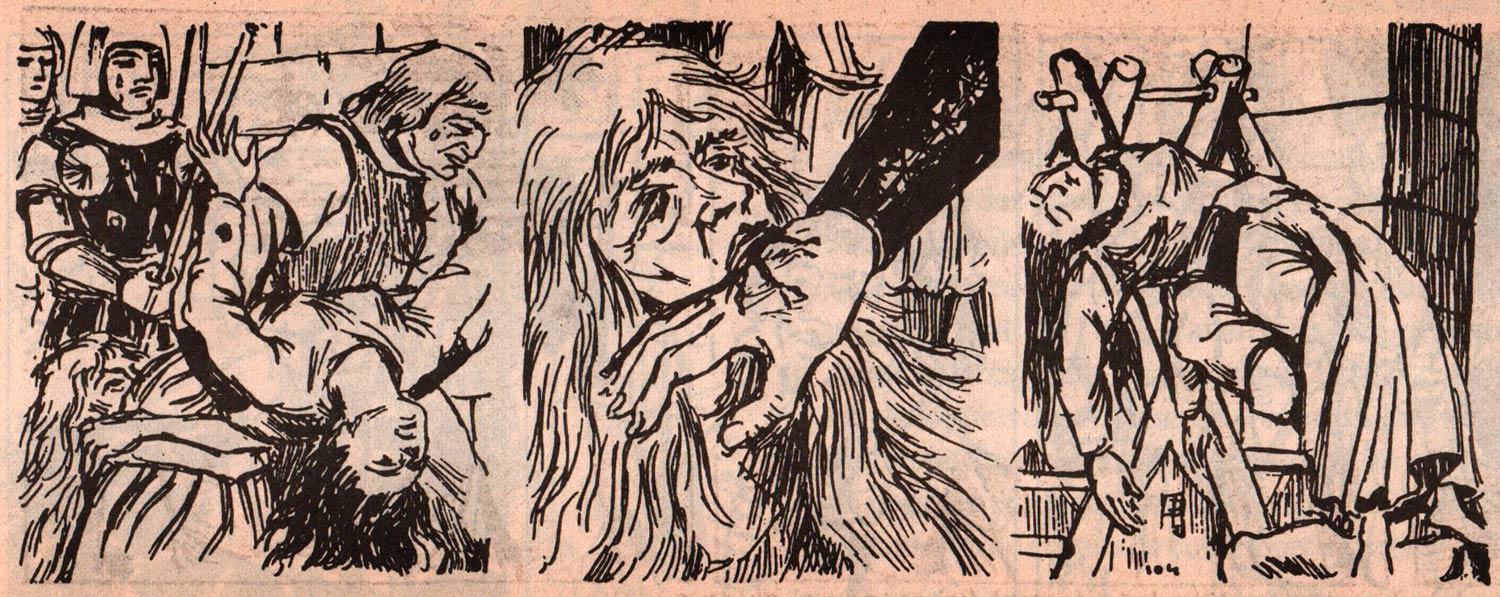Gilbert Bloch was a French artist of newspaper text comics, who, in the 1950s, worked mainly for the French communist press. He made several adaptations of literary classics for L'Humanité. He should not be confused with French World War II resistance leader Gilbert Bloch (1920-1944).
Life and career
Not much is known about Gilbert Bloch's life and career. His earliest illustrations appeared in the French communist newspaper L'Humanité, where he drew text comic stories, with the narration and dialogues printed under the images. Among them were 'Les Grandes Heures de la Commune' (1954) and adaptations of Hans Jakob Christoffel von Grimmelshausen's picaresque novel 'Simplicius Simplicissimus' (1954, in a rewritten version by Raymond Lavigne) and Victor Hugo's 'Notre Dame de Paris' (1956). The latter story was also serialized in mainstream newspapers like Le Patriote, L'Echo du Centre and La Marseillaise.
Bloch drew additional serialized newspaper picture stories for L'Humanité's Sunday paper, L'Humanité Dimanche, mostly in the vertical text comics format. These included an adaptation of the Honoré de Balzac play 'Splendeur et Misère des Courtisanes' (1956), a serial about the life of French 19th-century dramatist and poet Alfred de Musset (1957) and comic strip versions of the Alexandre Dumas novels 'Une Fille du Régent' (1957-1958) and 'Le Bâtard de Mauléon' (1959). Another productive comic artist for L'Humanité during this period was Pierre Donga.
After the 1950s, no further activiteis of Gilbert Bloch are known.





